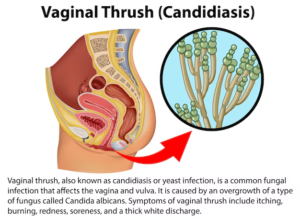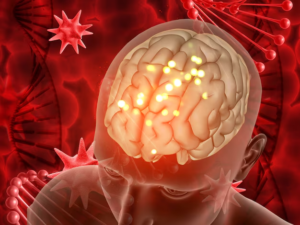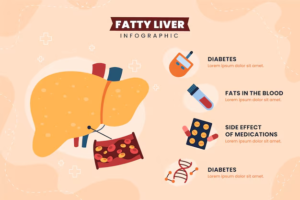Understanding Malnutrition Through the Lens of Ayurveda
Understanding Malnutrition Through the Lens of Ayurveda is a pressing global health issue that affects millions, transcending borders and socioeconomic statuses. It is not merely a lack of food but encompasses a range of deficiencies, excesses, and imbalances in a person’s intake of nutrients. Ayurvedic medicine, an ancient holistic healing system originating from India, offers a unique perspective on nutrition and health. This blog delves into the Ayurvedic approach to understanding and addressing malnutrition, highlighting its principles, dietary recommendations, and practical applications.
What is Malnutrition?

Malnutrition refers to the condition resulting from an imbalanced diet, which can lead to undernutrition (insufficient nutrients) or overnutrition (excessive intake). It can manifest in various ways, including stunted growth in children, weakened immunity, increased susceptibility to diseases, and even obesity. The World Health Organization (WHO) classifies malnutrition into several categories, including:
- Undernutrition: This includes wasting (low weight for height), stunting (low height for age), and micronutrient deficiencies.
- Overnutrition: This often leads to obesity, which can cause various health issues like diabetes, heart disease, and certain cancers.
- Hidden Hunger: This refers to a lack of essential vitamins and minerals despite adequate caloric intake.
The Ayurvedic Perspective on Nutrition
Ayurveda emphasizes balance in all aspects of life, including diet. The Ayurvedic approach to nutrition is holistic, considering not only the physical aspects of food but also its energetic qualities and how they interact with individual constitution, or Prakriti. According to Ayurveda, each person is unique, and dietary needs must be tailored accordingly.
Key Concepts in Ayurveda Related to Nutrition:
- Doshas: Ayurveda identifies three primary doshas—Vata, Pitta, and Kapha—that represent different combinations of the five elements (earth, water, fire, air, and ether). Each person has a unique balance of these doshas, which influences their nutritional needs.
- Agni (Digestive Fire): Agni is a central concept in Ayurveda, representing the body’s digestive power. A strong Agni is crucial for proper digestion and nutrient absorption. Poor digestion can lead to malnutrition, regardless of the quantity of food consumed.
- Sattva, Rajas, and Tamas: These three qualities (gunas) influence not just food choices but also the overall effect of food on the mind and body. Sattvic foods promote clarity and health, rajasic foods are stimulating, and tamasic foods can lead to lethargy and disease.
- Rasa (Taste): Ayurveda categorizes food into six tastes—sweet, sour, salty, bitter, pungent, and astringent. A balanced diet includes all these tastes, as they provide a range of nutrients and contribute to overall health.
Malnutrition and Its Causes in Ayurveda
From an Ayurvedic perspective, malnutrition can stem from various factors:
- Imbalanced Diet: Consuming too much of one taste or dosha can lead to nutritional imbalances. For example, a diet overly rich in processed, rajasic foods can disrupt Agni and lead to deficiencies.
- Poor Digestion: Even a nutrient-rich diet can result in malnutrition if Agni is weak. Stress, improper food combinations, and irregular eating habits can all impair digestion.
- Environmental Factors: Seasonal changes, geographical location, and climate can influence dietary needs. For example, during winter, warmer, heavier foods may be more beneficial, while lighter foods are preferable in summer.
- Lifestyle Factors: Stress, lack of sleep, and sedentary lifestyles can all affect overall health and nutritional status.
Ayurvedic Remedies for Malnutrition
Ayurveda offers a range of dietary and lifestyle recommendations to combat malnutrition. These focus on enhancing digestion, balancing doshas, and ensuring a varied diet.
1. Strengthening Agni
- Digestive Herbs and Spices: Incorporating spices such as ginger, cumin, and fennel can stimulate Agni. Herbal teas like peppermint or ginger tea can aid digestion.
- Warm, Cooked Foods: Ayurveda recommends consuming warm, cooked meals, which are easier to digest than raw foods. Soups, stews, and khichdi (a dish made with rice and lentils) are excellent options.
2. Tailoring Diet to Dosha
- Vata Dosha: People with a Vata imbalance may benefit from warm, moist, and nourishing foods. Healthy fats, such as ghee and nuts, can help balance Vata.
- Pitta Dosha: For Pitta individuals, cooling foods are essential. Incorporate fruits like melons and cucumbers, and avoid spicy foods that can aggravate Pitta.
- Kapha Dosha: Those with a Kapha imbalance should focus on light, warming foods. Spices like black pepper and ginger can aid in digestion and help reduce Kapha.
3. Ensuring Nutritional Variety
A balanced diet should include all six tastes. Here’s how to incorporate them:
- Sweet: Whole grains, root vegetables, and fruits.
- Sour: Citrus fruits, yogurt, and fermented foods.
- Salty: Sea salt and naturally salty foods like seaweed.
- Bitter: Leafy greens and herbs like bitter melon.
- Pungent: Spices such as garlic, onion, and black pepper.
- Astringent: Legumes, lentils, and certain fruits like pomegranates.
4. Lifestyle Changes
- Regular Eating Schedule: Establishing regular meal times can help strengthen Agni.
- Mindful Eating: Eating slowly and savoring each bite can enhance digestion and nutrient absorption.
- Physical Activity: Gentle exercises like yoga can stimulate digestion and promote overall health.
Case Studies and Practical Applications
- Case Study 1: A Child with Undernutrition
A 7-year-old child was diagnosed with stunted growth and low energy levels. The Ayurvedic approach involved assessing the child’s Prakriti and balancing Vata with warm, nourishing foods, incorporating digestive spices, and ensuring a regular eating schedule. After several months of tailored dietary changes and lifestyle adjustments, the child showed significant improvement in energy and growth. - Case Study 2: An Adult with Overnutrition
An adult struggled with obesity and related health issues. The Ayurvedic practitioner focused on understanding the individual’s emotional relationship with food, strengthening Agni through the inclusion of digestive herbs, and recommending a diet that balanced all six tastes while reducing processed foods. The client reported weight loss and improved energy levels within a few months.
Conclusion
Malnutrition is a complex issue that requires a multifaceted approach. Ayurveda offers valuable insights into the role of diet, digestion, and lifestyle in maintaining health and preventing malnutrition. By understanding one’s unique constitution and the principles of Ayurveda, individuals can make informed dietary choices that promote overall well-being.
In a world where malnutrition continues to be a significant concern, integrating Ayurvedic practices can provide a holistic pathway to better health. Whether you’re seeking to address undernutrition, overnutrition, or simply wish to enhance your overall vitality, Ayurveda offers timeless wisdom that remains relevant today.








Leave a reply